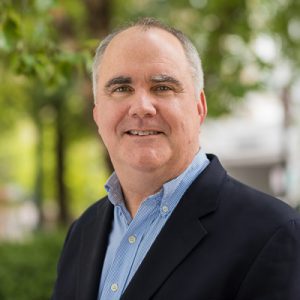The Park Service Should Not Be Subsidizing Multi-Billion Telecoms to “Wire” Our National Parks
 Legislation is advancing in Congress as part of the Explore Act to require the National Park Service to provide broadband and cellular access in every park where there is a perceived need for greater coverage. The Explore Act, which recently passed the House of Representatives by unanimous voice vote, is designed to bolster outdoor recreation in the United States. The bill now goes to the Senate, which could vote on the measure anytime this year.
Legislation is advancing in Congress as part of the Explore Act to require the National Park Service to provide broadband and cellular access in every park where there is a perceived need for greater coverage. The Explore Act, which recently passed the House of Representatives by unanimous voice vote, is designed to bolster outdoor recreation in the United States. The bill now goes to the Senate, which could vote on the measure anytime this year.
However, several parts of the Explore Act need to be revised. One section, called Connect Our Parks, directs the Park Service to finance system-wide broadband and cellular through “the use of public-private partnerships.” It is somewhat bizarre that a federally tax-supported agency should subsidize multi-billion-dollar telecoms like AT&T and Verizon to better serve their commercial subscribers. The Congressional Budget Office has yet to put a price tag on this nebulous national joint venture.
According to the Senate Committee on Energy and Natural Resources report, “the National Park Service has identified the lack of quality internet access as a barrier to hiring and retaining qualified personnel.” That is not quite true. Private park concessioners have trouble recruiting young employees to work for the summer at low-paying wages crammed into dormitories with no broadband access. Yet, the bill does not ask these private companies to help defray the costs of securing electronic amenities to entertain their underpaid workers.
As a first step in this effort, the bill calls for the Park Service to determine where it needs cell and broadband service within one year. Ironically, in response to a recommendation from a scathing Interior Office of Inspector General report, the NPS has been unable to produce a complete inventory of cell towers already within park boundaries. The Inspector General report confirms widespread mismanagement of these commercial wireless facilities by a badly overmatched bureaucracy.
Nor does the Park Service know what cell coverage these towers provide. For example, two-thirds of Yellowstone’s backcountry has cell coverage from towers located in developed areas. The park contends that it did not intend for this spillover coverage to be so widespread but also concedes that it has taken no steps to limit coverage from towers typically sited on mountain tops or ridges to maximize the commercial operator’ coverage footprint.
Placing many more towers throughout big Western nature parks (the apparent target of this legislation) will send signals ever more deeply into these parks’ wild and wilderness areas. The bill mentions the need to protect park “viewsheds” but does not mention natural soundscapes, wilderness, or the importance of maintaining places in national parks where the electronic tendrils of civilization cannot penetrate.
Studies demonstrate that the human voice is one of the most disruptive sounds for wildlife. Extending signals that project the human voice into the most remote recesses of nature’s cathedrals undermines the national park’s mission of providing sanctuary to wildlife.
Many of these same big nature parks are struggling with overcrowding. Endless traffic jams and crowded trails leading to popular vistas are common. Rather than help parks plan on how to prevent being loved to death, this myopic initiative will aggravate problems by continuing to blur the lines between our National Parks and Theme Parks.
Park planning should not be confined to the narrow band of telecommunications, as this bill does. Increasingly, national parks are eschewing statutorily required general management plans and establishing carrying capacities to protect park resources and the visitor experience.
This bill also limits consultation on these plans to tribes and “stakeholders” preselected by park superintendents. This exclusion further erodes the idea that parks are supposed to serve and involve the entire public in their planning. Further, the bill is written to suggest that these wireless plans can be conducted without compliance with bedrock environmental planning laws, such as the National Environmental Policy Act and the National Historic Preservation Act – statutes that national park managers increasingly try to avoid.
Our national parks are in dire need of system-wide planning to facilitate all the elements in these complex institutions to work better together. Single-issue congressional micromanagement of the type exemplified by this bill skews this synergy. “Can you hear me now?” should not be the guiding principle of national park management.
PEER is working with our partner organizations to try to introduce amendments to this bill to increase public participation and protect natural soundscapes and wilderness areas from wireless intrusions.
 Tim Whitehouse is the Executive Director at PEER.
Tim Whitehouse is the Executive Director at PEER.

